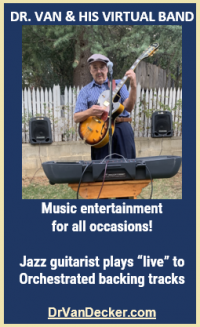By Rebecca Jefferis Williamson
June 21, 2017 (El Cajon) -- Run up three flights of stairs in heavy firefighter boots--in the heat wave. To walk in someone else’s shoes, or firefighter’s boots, can be eye opening and “deepen” your respect for what these men and women firefighters are required to do. The opportunity to learn what Heartland Fire & Rescue does on a routine basis was extended via their first-ever Fire Ops 101 class held Saturday, June 17th, at their Thomas H. Owen Sr. training facility in El Cajon.
Firefighters are expected work during extreme weather conditions during summer and early fall, fighting fires while residents are viewing TV weather maps in orange and red warning of record high temperatures, Googling for cool zones, heading to crowded beaches or pools, and leaving air conditioning on even for their pets.
During rainy season, the firefighters may be required to save a resident stranded in a car on a flooded road, while residents take shelter indoors.
Sonny Saghera, public information officer, with Heartland Fire and Rescue, said during the event, “These are elected officials that have been invited to see what we go thru with live fire exercises.”
Local politicians such as Lemon Grove’s Mayor Racquel Vasquez, members of the media including this reporter, and others were invited to suit up in actual firefighting gear and learn what it’s like to hold a fire hose with water pumping thru it, break open a jammed, locked door, use the jaws of life in a simulated auto extraction, and more.
Fire Ops 101, an International Association of Firefighters or IAFF sponsored event, is a shared training class that traces back to the mid 2000’s. It facilities experiential, hands-on knowledge of structural firefighting for elected officials, dispatchers, city employees and the media in a controlled environment.
 Lemon Grove Mayor Racquel Vasquez, before the class started, said, “I am really excited to experience what it takes to prepare and provide safety in our communities.”
Lemon Grove Mayor Racquel Vasquez, before the class started, said, “I am really excited to experience what it takes to prepare and provide safety in our communities.”
The participants were fitted with their turn-outs (boots, helmet, hood, jacket, gloves and pants) and assisted by young Explorers like John Stevenson and Andre Fleck, to get suited up.
Medical history and vitals were taken before the day started.
Starting at Fire Station #9, a two-acre training facility, instructors and firefighters assembled to prepare for evolutions. Evolution one was the fire attack evolution and skills station. Evolution two was the search and rescue evolution and skills station. Evolution four was EMS and skills station. The final evolution was the auto extrication evolution.
A separate area, away from the two training towers, was the rehab or rest area with shade and a rehab vehicle. A relatively new chair, called the KoreKooler Rehab Chair, had elongated, deep plastic bags in the armrests that contained ice and water. The lower arm, elbow to wrist, is laid into the ice to cool down an over-heated firefighter down as quickly as possible.
Firefighter Gabe Belloli was just one of the crew members who assisted the participants in the evolutions. Belloli explained procedures, helped them suit up, answered questions along the way. Evolutions included crawling thru a first-floor tower, holding onto a hose for guidance, and experiencing smoke, embers, and, once again, the extreme heat fire fighters deal with all the time. They go towards the flames, not away.
Though the training coincidentally occurred during an extreme heat wave, a fire fighter on a call faces not only hot weather, but added heat from fire along with air that may be filled with embers and smoke, while searching out flames--not avoiding the heat like a civilian would.
The participants got a miniature dose of using the well-known jaws of life and other tools to know what it is like to extract auto crash victims when they are trapped in a car. Part of that experience can include hearing children and adults cry and scream during the extraction. Explaining what procedure is being used while it is going on, the metal being bent or shattering of glass, is also part of what is relayed to the victims.
Participants also got to experience climbing up a fire truck ladder, on a ladder truck, but under extremely safe conditions using harnesses, to feel and see what part of the job might entail.
Paramedics on the crew do immediate medical assessments at the site of crashes, fires, and many other settings. They maintain a “medicine bag” type box that includes medicines to deal with drug over-doses, heart attacks, burns, and a myriad of other medical emergencies.
A tip that all might want to pay attention to is to “stay hydrated” in extreme heat. They recommended drinking 8-12 glasses of water a day. Staying hydrated is essential for them.
The sense of family, comradery, and a mindset of being a team permeated the fire fighter ranks. Ranks that endure physically harsh conditions and require extreme intellectual and emotional composure.
The training facility provides ongoing training for the cities of El Cajon, La Mesa, Lemon Grove, and Santee; the fire protection districts of Alpine, Bonita, La Mesa, Lakeside, and San Miguel, San Diego County Fire authority, Barona, and Viejas.










Recent comments